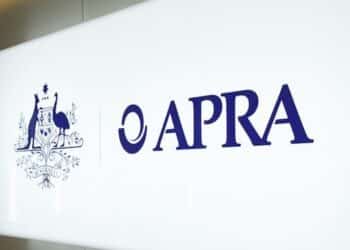Recent years have seen many financial advisers looking to utilise technology and alternative forms of communication to improve efficiency and personalisation of their services.
In a LinkedIn post, Martin McGrath, a financial planner at Financial Edge Group, argued that video communication should be a “standard part of every adviser’s toolkit”.
Expanding on this, McGrath told ifa that his practice utilises videos to help clients understand the steps in the advice process, while also fostering confidence and trust.
“We have probably eight to 10 videos that we record and update every couple of years around different parts of the process for the clients,” McGrath said.
“We have a video that goes to clients about what to expect in their first meeting, and it’s a 90-second video, it’s a bit of a B roll, or images of our office, a couple of different advisers talking, just explaining what they should expect in that first meeting.
“Then we have another one that we send during the paraplanning stage of, like, this is what we’re doing behind the scenes with your strategy. We’re doing a calculation, blah, blah, blah, and they’re generic. So, discussing what’s happening, keeping the client up to date, and they can be recorded once and used over and over.”
He also noted how this can be utilised for ongoing clients, allowing them to stay informed as they proceed through the regular touch points of the advice process.
“Same with review clients. I’ve got a video that goes with our fee renewal to our existing clients about, this is how we calculate your fees. This is where we see the value. That kind of thing,” McGrath said.
“I think there’s various touch points that happen often and often with lots of clients, and rather than either doing nothing or rather than explaining to the client over the phone 50 or 100 times or writing an email multiple times.”
Benefits for clients and advisers
While he recognised that it would take a considerable time investment initially, McGrath said, in the long run, it will help advisers save time on repetitive conversations, while also fostering trust with new and existing clients.
“They potentially know what you look like. There’s a face, they know some of your mannerisms, they perhaps know your voice. They know what the office is going to look like,” he said.
“Particularly for brand-new clients, I think it builds in a certain level of trust. So they’re a bit more comfortable when they’re coming in for the first time, because they’ve even seen some things like that.
“I think it is both that time saving, but also building that brand authority that you kind of know what you’re doing, you’re in that space.”
Other uses for video
In addition to process videos, McGrath also utilises educational content to help existing and potential clients build their financial literacy, while also placing the firm in a position of respect and authority within the wider community.
“So, less system driven, but more strategy driven. So, ‘This is Centrelink and how it works’. Or ‘This is a downsizing, what are the rules?’ ‘This is how a carry forward contribution works’. And these might be three to five minutes, and they’re used, potentially, for marketing purposes for the broader market, but we also use them a lot with existing clients,” he said.
The third type of video McGrath uses are explanatory videos, wherein the adviser records themselves explaining part of an advice document or form on Loom, a video software provider, in response to a client query.
“I find it’s a really nice, easy way to scale it. It’s a lot faster than writing a 500- or 1,000- word email. It can be recorded in two or three minutes. The client finds it personal and can rewatch it over and over if they need to,” he said.
“We do a lot of that with, sometimes implementation forms, sometimes advice documents, sometimes maybe it’s a birthday wish or a message or an update on where things are at. That’s not so much the scalable bit, because that’s always personalised to their situation.”
Despite video statements of advice (SOA) seemingly the next natural progression on his path, McGrath shared that, while this is something he has considered in his practice, he doesn’t plan on taking that step yet.
“We’ve got permission from our dealer group to potentially explore things. But for us, it’s that trade-off of how much time do we invest in that if, potentially, the rules are going to change with future reform?” McGrath said.
“The video concept is part of how we communicate, but we haven’t got to the point where we’re doing video SOAs, or video ROAs, or anything in that regard.”
While McGrath is steadfast in his belief that video communication benefits both advisers and clients, he also noted that videos are in no way meant to replace face-to-face interactions, acting more as a companion to traditional forms of communicating.
“If a client asks a question, you’ll answer it, but by sending that video before that meeting, they’ve got an understanding of what’s happening in that meeting. Their expectations are aligned,” he said.
“The benefit is really around that scalability. It’s not eliminating the face-to-face, but it’s just potentially saving some of that time face to face.



